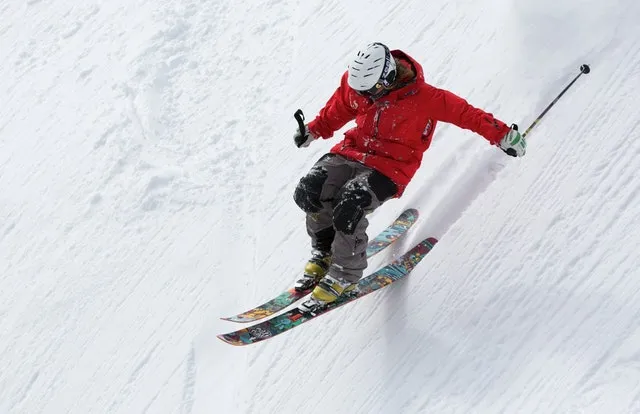Why Physiotherapy is Important for Skiing Injuries

As winter slowly approaches, many of us will be heading back to the slopes for a skiing holiday, which has been a long time coming!
For skiers and snowboarders, injuries are all too common, with knee injuries being the most common. This article explores how Physiotherapy can help you have an injury-free skiing holiday, whilst also advising on some of the best injury prevention methods you can apply prior to your holiday.
How Physiotherapy can help skiing injuries
A Physiotherapy assessment in the lead up to your skiing holidays is a great way to assess your current fitness, and identify any potential risk factors, such as muscle weakness, previous injuries, and your current training regimen, in order to put together a plan for injury prevention. As we all know, when it comes to injuries, prevention is better than treatment!
If, however, you hit the slopes and unfortunately do sustain an injury, the number one rule is to make sure you get it assessed! The majority of injuries are completely safe to carry on exercising / skiing with, however, some aren’t. It’s impossible to know which category you fit into without a proper assessment by a healthcare professional, so don’t take the chance.
With the majority of injuries, some basic self-management techniques and advice is all that’s needed for you to safely carry on with your holiday, so don’t stress, but get it assessed!
Types of skiing injuries Physio can help
With skiing commonly classed as an extreme sport, there’s no surprise that there’s a relatively high injury rate compared to other sports, and for good reason. Generally speaking, not many of us prepare our bodies for the intense physical demand that skiing places on the body, meaning that injuries are all too common.
Below are a couple of common skiing injuries, and how Physiotherapy can help:
Knee Ligament Sprain / Rupture
The knee is the single most common joint affected by skiing, accounting for around 1 in 4 ski related injuries. Knee injuries are so frequent in skiing because of the increased force and stress that is placed upon the knee in movements of twisting and rotation. Although the knee is a strong, stable joint, the speed at which we ski, when combined with a fall or loss of control, can create extreme stress in the ligaments of the knee , leading to tears or ruptures of the ligaments.
Physiotherapy can help with the prevention and rehabilitation of knee ligament injuries through targeted exercise rehabilitation. Professional skiers spend a huge amount of their training on balance drills and exercise to improve their balance, coordination and strength. Furthermore, as the muscles which encapsulates the knee act as secondary ligaments to improve support and stability, the stronger the musculature around the knee, the more supported our joint becomes which reduces the risk of injury.
However, as we know, balance and strength don’t just improve on their own. Time, consistency and motivation need to be implemented through the completion of a targeted training plan in order to improve these injury risk reducing variables.
Shoulder Sprain / Strain
Falling is part of the parcel when it comes to skiing, especially as a beginner. When you’re about to fall, it’s almost automatic to put your arms out in front of you to break your fall. After all, it’s better than landing flat on your face! However, the high speed impact of the fall travels up your arm and can cause injury to your shoulder. This injury can range from anything from a muscular strain all the way up to a shoulder dislocation or fracture.
Assessment is key here. The initial management techniques are clearly very different when treating a muscle strain compared to a shoulder dislocation, so it’s best to get it assessed early.
Regardless of the nature of the injury, Physiotherapy is key in order to regain full strength, mobility and flexibility post injury. Working closely with a Physiotherapist, by focusing on exercise rehabilitation, sports massage, acupuncture and a wide range of self-management techniques, you’ll be giving yourself the best chance to return to full shoulder function in the quickest time possible.
How to prevent skiing injuries
The prevention of skiing injuries requires a structured and individualised exercise programme, but also a touch of luck as skiing is an extremely intense activity with many uncertainties. However, simple tips such as sticking to the slopes which are suited to your level, and incorporating sufficient rest periods into your day to reduce fatigue, will help as the majority of skiing injuries are encountered towards the end of the day when we are most fatigued!
Below are two great examples of exercises which can be integrated into your skiing injury prevention exercise regime as they both target muscle strength and balance / stability. Give them a go!
One Leg Hop Jumps
A simple yet effective exercise to not only strengthen your legs, but also greatly challenge and therefore improve your balance. This exercise can be completed by placing 4 cones or similar objects in a circle with you standing in the centre on one leg. Hop forwards and backwards, and side to side whilst maintaining your balance on one leg. To progress the exercise, move the cones gradually further away.
Complete repetitions until fatigue, x2 times on each leg.
By integrating one leg balance exercises such as the above into your exercise regime you’ll be training your knees’ balance receptors which are an important factor in injury prevention, alongside having strong muscular support which encapsulates the joint acting as secondary ligaments. This exercise would be ideal to complete in the months prior to your skiing holiday, and will also be an advanced stage exercise if you are returning from a knee injury.
Split Squat
This exercise is one of the best exercises to improve overall strength and power in our legs, which is a vital component to reduce our risk of injury. Standing on one leg with your rear foot elevated on a chair, bend the front knee to lower yourself down to the floor, hold for a second at the bottom and then stand back up. You will feel the muscles in the thigh and bum working extremely hard. To progress this exercise and make it more challenging, start holding light weights or wear a rucksack with heavy objects inside to increase the resistance.
A good starting point would be to complete 12 repetitions x3 sets on each leg with bodyweight, then gradually adding more weight as you get stronger.


By integrating this exercise into your weekly exercise routine in the months prior to your skiing holiday, you will be stimulating muscle growth and strength which will lead to a much more supported and stable knee joint.
Pre-Holiday Physiotherapy
The number one recommendation if you are heading skiing this winter would be to book yourself in for a Physiotherapy assessment so that any injury risk factors can be identified beforehand, and can be factored into a specific training program which will help you reduce your risk of injury.
In the days leading to your skiing holiday, booking several sports massage sessions is a helpful way to ready your muscles and joints for the intense physical demand you will be soon placing upon them. These sessions will help to reduce muscle tightness, flush out waste products and prep the muscles for intense activity; it’s a great complementary treatment to use alongside your skiing exercise training programme.
If, however, on return from your skiing holiday, you were unfortunate enough to pick up an injury and did not manage to get it assessed on site, make sure to book an assessment immediately. Don’t let the injury linger. The sooner an injury is assessed, diagnosed, and rehabilitated, the better the outcome and the sooner you return to normal full function.
Physiotherapy with Katie Bell
At Katie Bell Physiotherapy, we have a wide array of expert Physiotherapists who are trained in assessment, diagnosis, and treatment of all sporting related injuries. Our team is able to deliver treatment techniques such as exercise prescription, acupuncture, sports massage, mobilisation and shockwave therapy.
Get in touch with us today to arrange an initial assessment to see how we can help.




